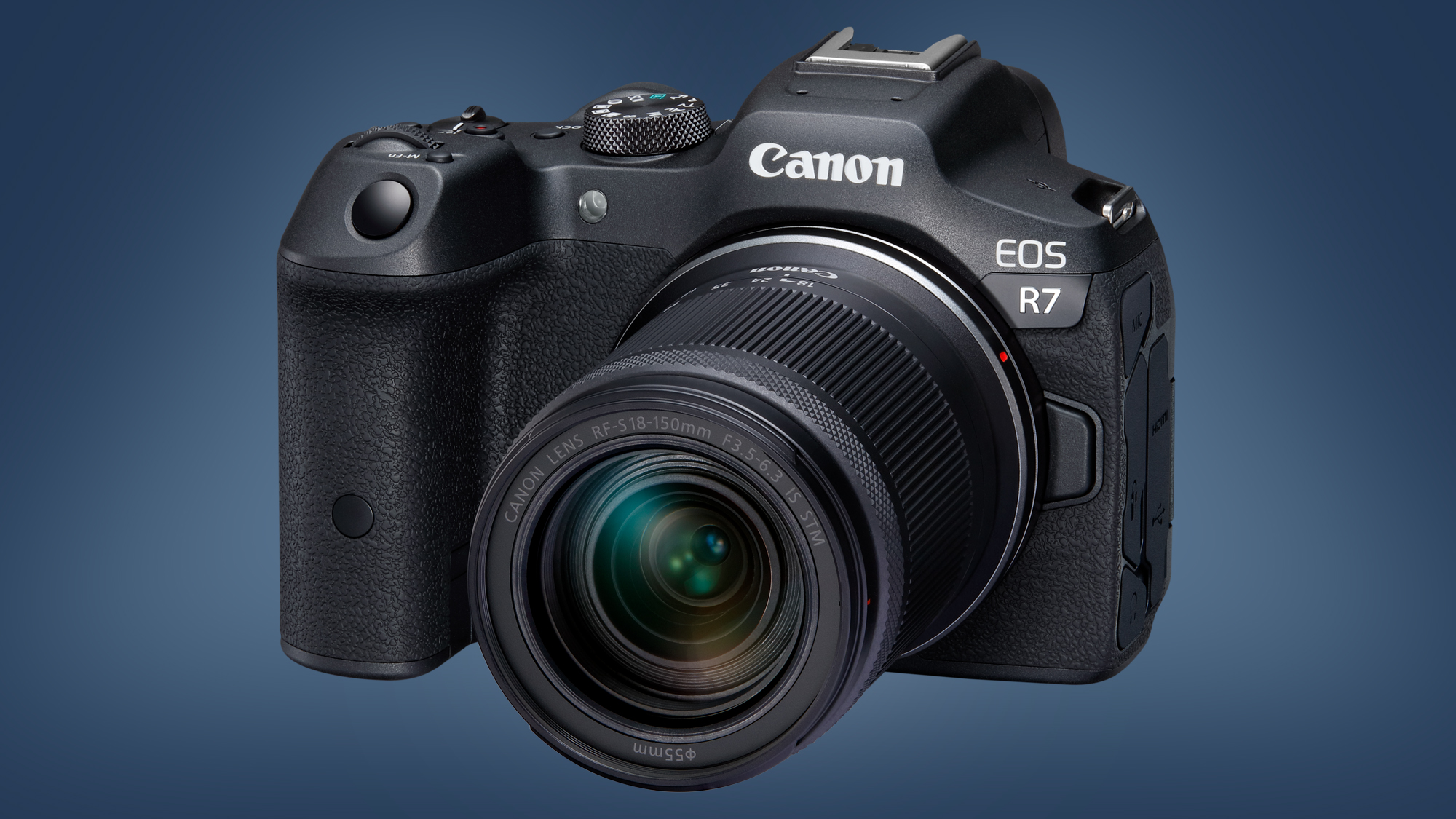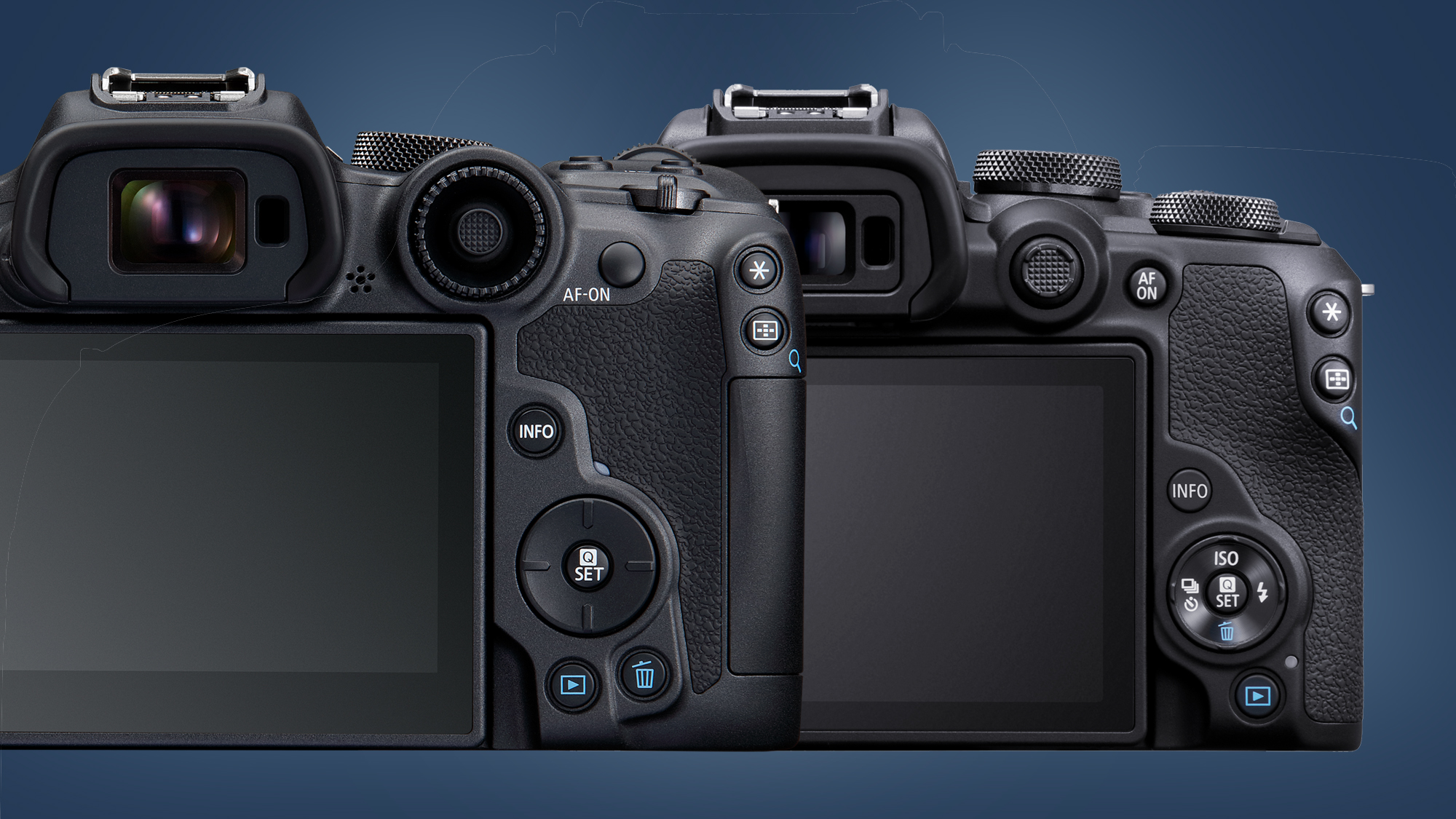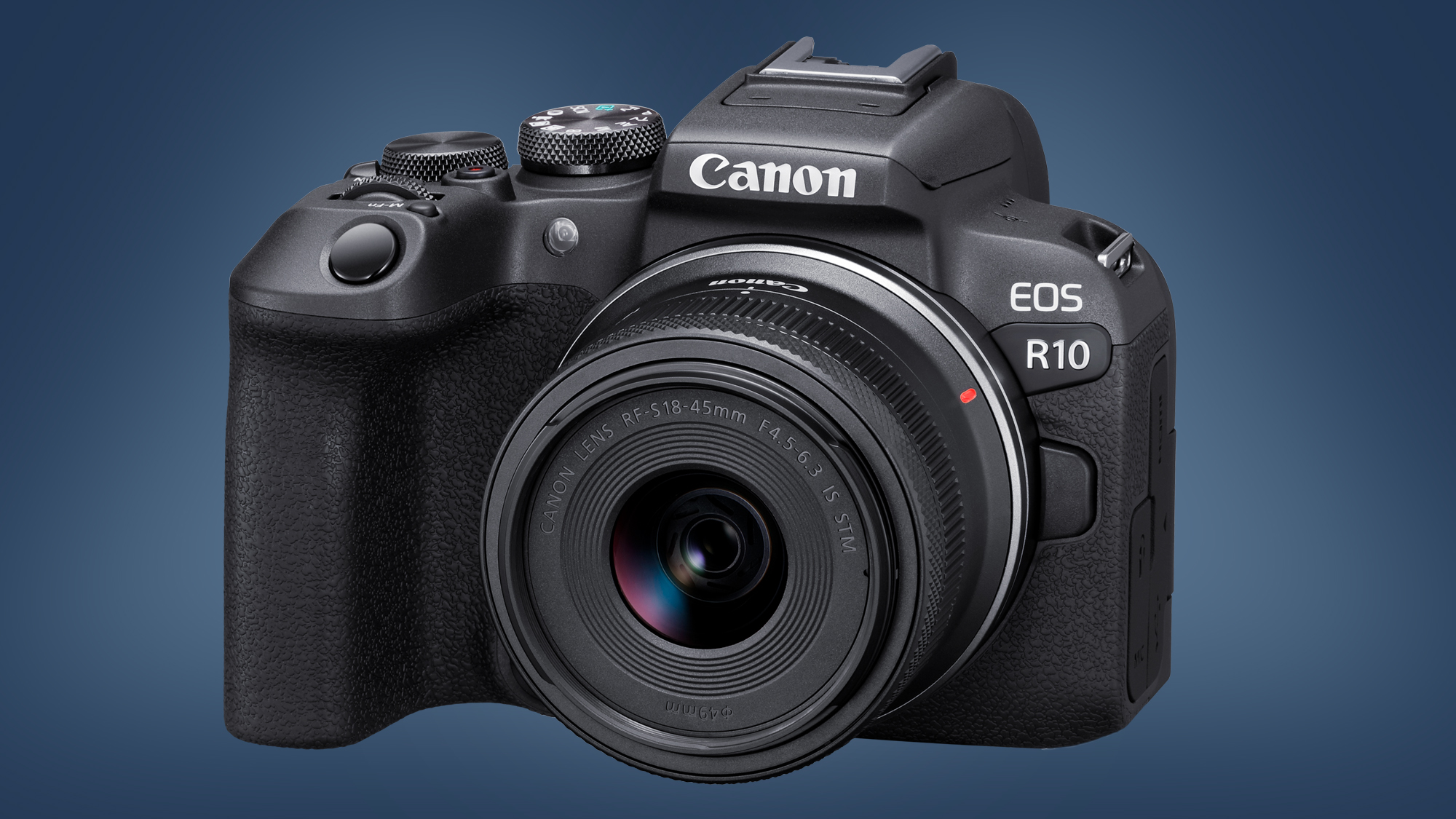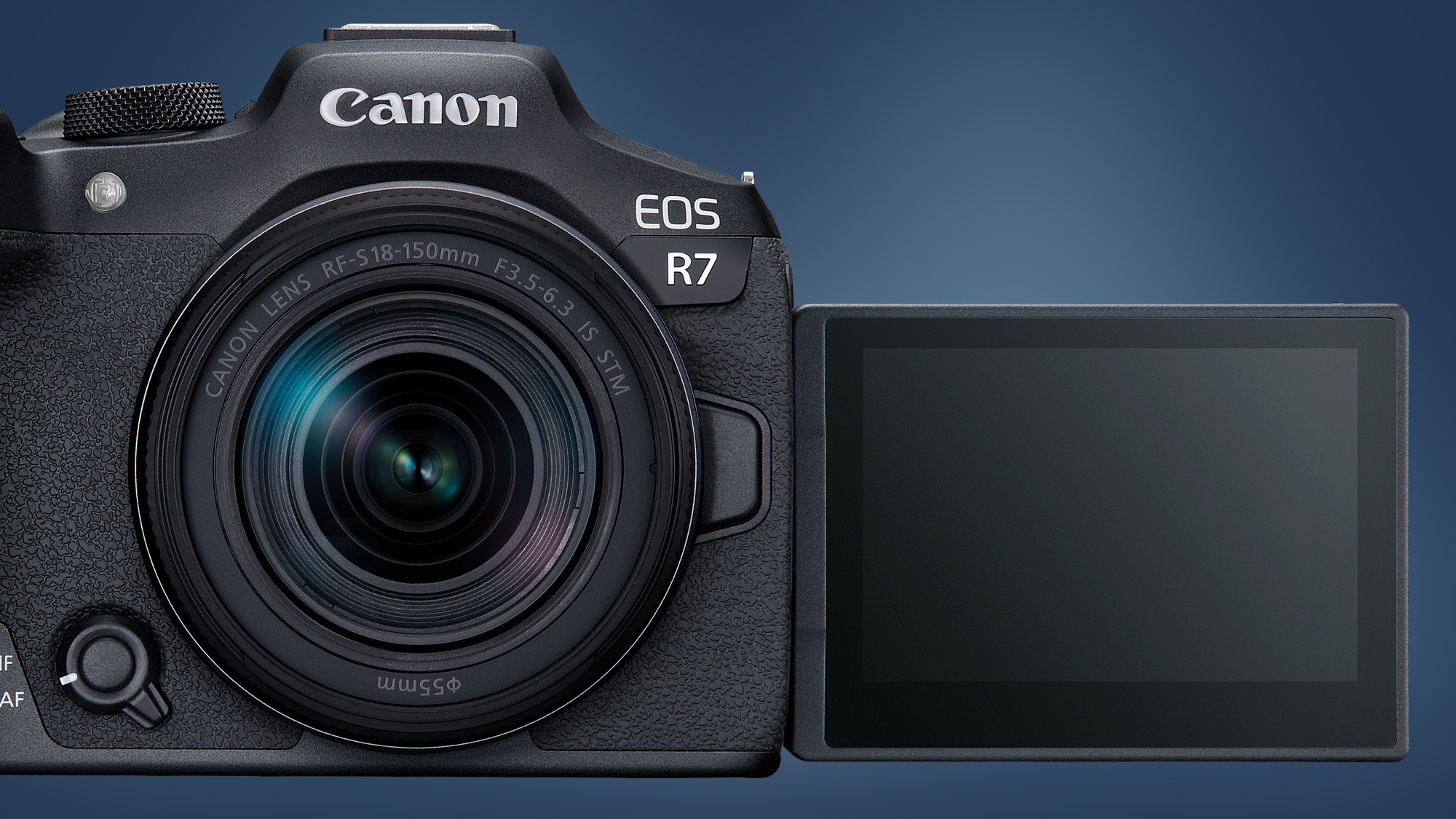The Canon EOS R7 and EOS R10 have finally arrived after weeks of leaks and rumors – and the two mirrorless cameras are the affordable all-rounders that amateur photographers have been waiting for. (Looking to jump to our early verdicts? Check out our hands-on Canon EOS R7 review and our hands-on Canon EOS R10 review).
Unlike the rest of Canon’s EOS R series, the EOS R7 and EOS R10 have APS-C sensors, which are smaller than full-frame sensors. This means they gather about half as much light as cameras like the Canon EOS R6. But the smaller sensors also bring advantages like lower price tags, smaller form factors, and a crop factor that’s often useful for wildlife photography.
Both cameras are, unofficially, the mirrorless successors to some of Canon's most popular DSLRs. The higher-end Canon EOS R7, which has a 32.5MP APS-C sensor, sits in between the Canon EOS 7D Mark II and mid-range Canon EOS 90D. Canon says the EOS R7 is its new flagship APS-C model and has been designed for sports and wildlife shooters.
But it's the Canon EOS R10 that will catch the eye of beginner or amateur photographers who've previously been priced out of the EOS R system. The EOS R10's size and specs, which include a 24.2MP APS-C sensor, mean it's more of a successor to the Canon EOS 80D or Canon EOS Rebel SL3 / EOS 250D (called the EOS 200D Mark II in Australia) from 2019. This means it's aimed at anyone who's looking to shoot smartphone-beating family or travel snaps.


One of the biggest upgrades on the EOS R7 and EOS R10, compared to Canon's older DSLRs, are their autofocus powers. Both cameras include Dual Pixel CMOS AF II, the same autofocus system seen on pricier cameras like the Canon EOS R5 and EOS R6. This brings benefits like AF coverage across the whole frame and subject-tracking smarts that let the cameras track humans, animals (dogs, cats, birds), and vehicles. For people and animals, the system will track faces and eyes, and can even find heads when neither of those are visible in the frame.
The two cameras also offer pretty rapid continuous shooting speeds of 15fps (when using the mechanical shutter), which is again useful for snapping moving subjects. Switch to the electronic shutter, and the EOS R7 offers slightly faster 30fps burst-shooting speeds than the EOS R10, which maxes out at 23fps.
Your hit-rate will be affected by the conditions and the lenses you're using, and the cameras' buffers are a slight bottleneck. At that maximum 15fps rate (with the mechanical shutter), the Canon EOS R7 can shoot raw images for just over three seconds in a single burst, while the EOS R10 is limited to just under two seconds. Still, both cameras can keep going for much longer when shooting JPEGs, and these are promising speeds – particularly for the entry-level EOS R10.

The EOS R7 brings several features that are lacking on the EOS R10. These include in-body image stabilization (IBIS), weather-proofing (to the same level as the EOS 90D), two UHS-II card slots (the R10 only has one), and that higher-resolution 32.5MP sensor, which is handy if you like to crop into your photos a lot when editing. The EOS R7 is also a stronger video tool, offering the ability to shoot uncropped 4K/60P video (this is cropped on the R10) and a headphone jack to go alongside its microphone input.
Naturally, these differences are reflected in the cameras' respective price tags. You can pre-order the Canon EOS R7, ahead of expected shipping in June, for $1,499 / £1,349 / AU$2,349 (body only) or $1,899 / £1,699 / AU$2,899 with its new RF-S 18-150mm f/3.5-6.3 IS STM kit lens, which has been announced alongside the cameras. This price tag makes it a potentially strong alternative to the similarly-priced Fujifilm X-T4.
The Canon EOS R10, meanwhile, is available to pre-order for $979 / £899 / AU$1,499 (body-only) or $1,379 / £1,249 / AU$2,049 with the RF-S 18-150mm kit lens, with shipping expected in July. For vloggers or those who simply want a smaller, wider kit lens, the EOS R10 is also available in a kit with the new RF-S 18-45mm f4.5-6.3 IS STM kit lens, which costs $1,099 / £999 / AU$1,649.
Analysis: The end of Canon's hobbyist DSLRs?

The Canon EOS R7 and EOS R10 aren't all-new cameras, with the camera giant instead combining the sensors, body designs, and features seen on previous models to create some much-needed affordable options for its EOS R lineup.
Canon says "the new sensors do share some components with existing sensors, but have been redesigned with new micro-lenses and circuitry". This means the EOS R7 is likely based on the 32.5MP sensor we've seen on the Canon EOS 90D and EOS M6 Mark II, while the EOS R10's 24.2MP sensor will be similar to the one seen in the Canon EOS 80D and EOS M3.
This is common practice for Canon and both of its new cameras clearly benefit from the new Digic X processor, which unlocks those improvements to autofocus and burst-shooting speeds. But what's particularly interesting about them, other than the fact they're the first RF-mount cameras with APS-C sensors, is that they're the spiritual successors to some of Canon's classic DSLRs.
Canon's hobbyist-level DSLRs typically are typically refreshed every three years, and its last new models – the Canon EOS 90D and Rebel SL3 / EOS 250D – arrived back in 2019. Given the specs and pricing of the EOS R7 and EOS R10, it looks like those new cameras will take the torch from Canon's older DSLRs into a new mirrorless-only era.
What they won't necessarily do, though, is mark the end of Canon's EOS M series. That older mirrorless system, which is based around the EF-M mount rather than Canon's newer RF-mount, hasn't officially been discontinued, despite a lack of development in the past few years. And while the Canon EOS R7 and EOS M10 are aimed at a similar audience, the EOS M series will likely remain (for now) as smaller and even more affordable options for beginners.
Still, one thing's for certain – these two new mirrorless cameras show that Canon's focus is very much on its EOS R system, which is why it's now finally been opened up to non-professionals.
from TechRadar: Photography & video capture news https://ift.tt/xjp7PRr
via IFTTT






0 kommenttia:
Lähetä kommentti